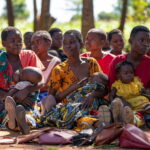Despite making up half of the world’s population, women continue to account for only a quarter of the voices and faces seen or heard in the news, according to a new global study on gender representation in media. The proportion has barely shifted in the last 15 years, with just a nine-point improvement over the past three decades.
The Global Media Monitoring Project (GMMP), the largest and longest-running international study on gender in news media, was released by the World Association for Christian Communication (WACC) with support from UN Women’s ACT to End Violence against Women programme.
This year’s findings show women represent just 26 percent of news subjects and sources across broadcasting, radio, print, and online outlets. The report warns this lack of visibility is particularly damaging for young women and girls, who struggle to see themselves reflected in mainstream media.
Equally troubling, the study highlights that gender-based violence rarely makes headlines, with fewer than two in every 100 news stories covering abuse. Only 2 percent of stories challenge gender stereotypes, marking the lowest level of stereotype-challenging journalism in GMMP’s 30-year history.
“Media reflects reality – and is essential for democracy and a fair and equal world for all women and girls. But when women are missing, democracy is incomplete,” said Kirsi Madi, UN Women Deputy Executive Director. “In today’s backlash against gender equality, these findings are both a wake-up call and a call to action. A radical rethink is needed so that media can play its role in advancing equality. Without women’s voices, there is no full story, no fair democracy, no lasting security and no shared future.”
The report does note progress in some areas: women now make up 41 percent of reporters in traditional news, compared to 28 percent in 1995. Research further shows that stories by women journalists are more likely to include women subjects (29 percent) than those written by men (24 percent), underscoring the importance of gender parity in newsrooms.
“The GMMP is a global accountability tool,” said Sarah Macharia, GMMP Expert Group Convenor. “Thirty years of data reveal both the persistence of deep-rooted stereotypes and the need to radically change our strategies toward a more inclusive, representative journalism.”
Still, the report stresses that voices of authority remain predominantly male, with women more often cited as eyewitnesses rather than subject matter experts. The 2025 findings arrive at a critical moment for gender equality, as the world enters the final five years of the Sustainable Development Goals and marks Beijing+30 at the 80th UN General Assembly.
“Women and girls deserve to see themselves represented in media and to have their stories told. The responsibility now lies with governments, editors, platforms and policymakers to make this equality real,” said Deputy Executive Director Madi. “We will not back down until women’s voices are heard in every newsroom and every story.”
The study monitored global news coverage on May 6, 2025, across radio, television, newspapers, and digital platforms. On that day, news agendas reflected both shared international themes and local concerns.
Major global stories included the 7.1 magnitude earthquake in Tibet, the impeachment of South Korean President Yoon Suk Yul, India’s Operation Sindoor in Pakistan, the Sudanese civil war, the war in Ukraine, the conflict in Palestine, elections in Germany, Canada, and Australia, Donald Trump’s re-election and subsequent deportation and tariff policies, and the election of a new Pope.
The GMMP noted that “Politics & Government” dominated coverage, followed by social and legal issues, the economy, and crime and violence, together accounting for 78 percent of all news. Gender-based violence was marginally reported, with isolated examples such as coverage of high-profile family violence cases in Australia and the violent deaths of two women in Guatemala.
For women and girls worldwide, however, the report concludes that this monitoring day was yet another “ordinary” news day – where their voices remained largely unheard.






